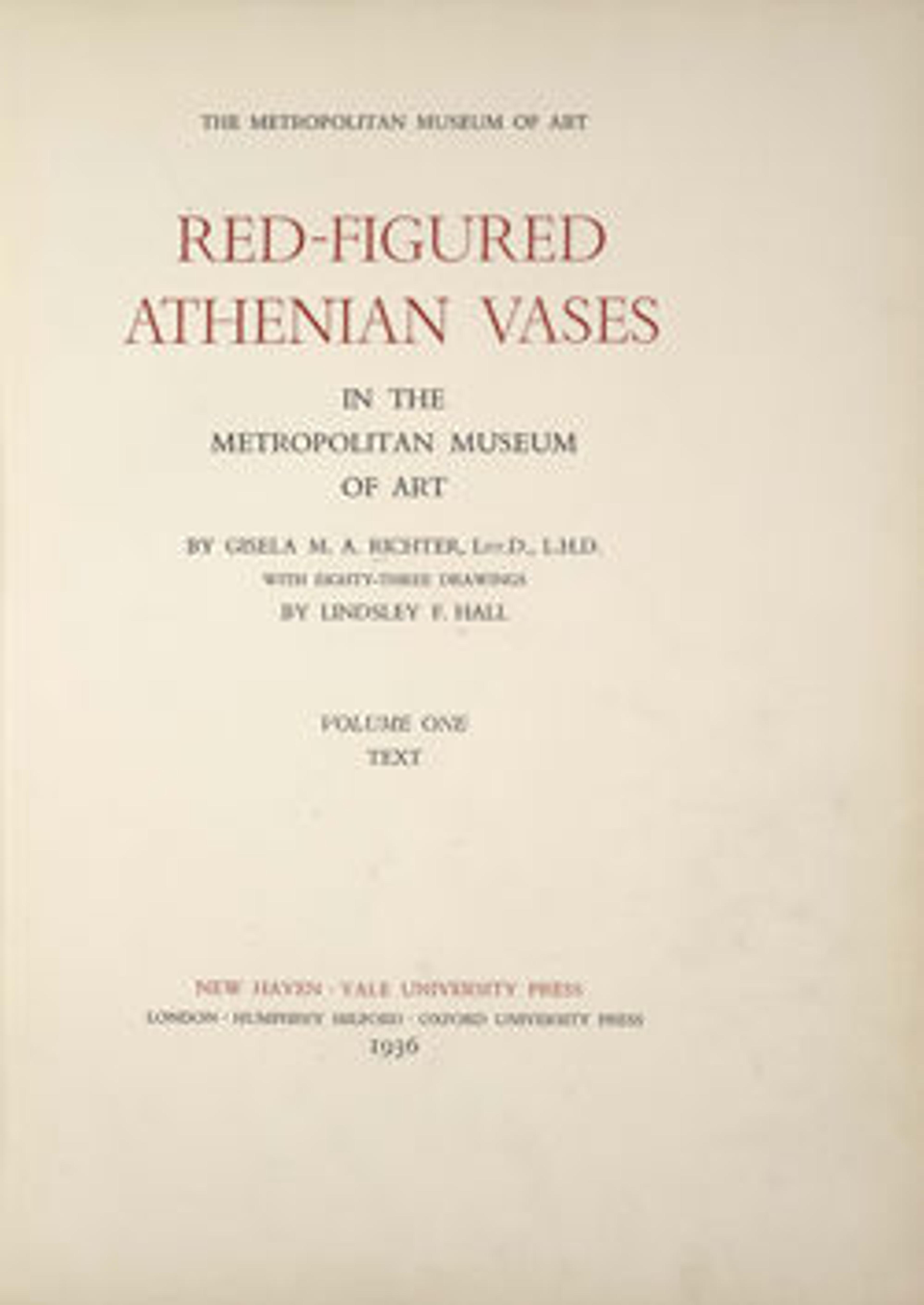Terracotta neck-amphora (jar) with twisted handles
Obverse, youth departing
Reverse, libation scene
The Suessula Painter's name derives from a site in Campania, in southern Italy, where several works of his were found. The Attic vases exported to Italy were a constant source of inspiration for local artists and spurred the development of a flourishing ceramic industry in the fourth century B.C. Although the subject on this vase is time-honored, the prominence of the added white paint represents an innovation.
Reverse, libation scene
The Suessula Painter's name derives from a site in Campania, in southern Italy, where several works of his were found. The Attic vases exported to Italy were a constant source of inspiration for local artists and spurred the development of a flourishing ceramic industry in the fourth century B.C. Although the subject on this vase is time-honored, the prominence of the added white paint represents an innovation.
Artwork Details
- Title: Terracotta neck-amphora (jar) with twisted handles
- Artist: Attributed to the Suessula Painter
- Period: Classical
- Date: ca. 400 BCE
- Culture: Greek, Attic
- Medium: Terracotta; red-figure
- Dimensions: H. 13 3/4 in. (34.9 cm)
diameter 6 3/4 in. (17.2 cm) - Classification: Vases
- Credit Line: Rogers Fund, 1917
- Object Number: 17.46.1
- Curatorial Department: Greek and Roman Art
More Artwork
Research Resources
The Met provides unparalleled resources for research and welcomes an international community of students and scholars. The Met's Open Access API is where creators and researchers can connect to the The Met collection. Open Access data and public domain images are available for unrestricted commercial and noncommercial use without permission or fee.
To request images under copyright and other restrictions, please use this Image Request form.
Feedback
We continue to research and examine historical and cultural context for objects in The Met collection. If you have comments or questions about this object record, please contact us using the form below. The Museum looks forward to receiving your comments.
